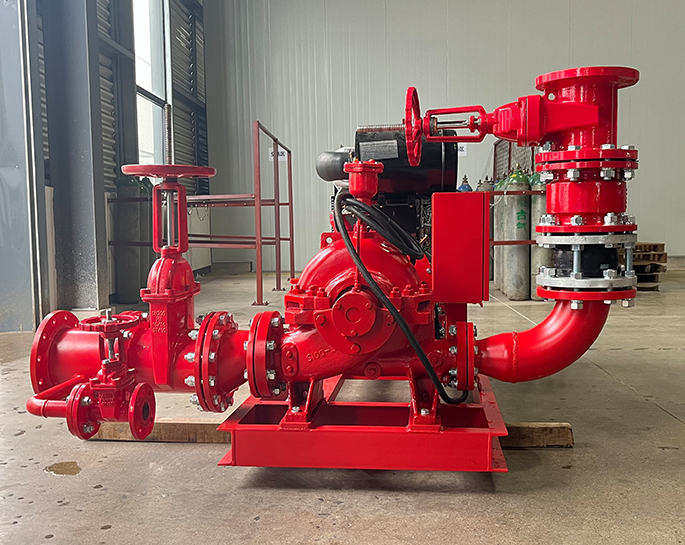What should I do if the fire pump pressure is insufficient?
If you encounter insufficient pressure from a fire pump, it's crucial to address the issue promptly to ensure the effectiveness of your fire protection system. Here are steps you can take:
-
Check for Obvious Issues:
- Inspect the pump and its components for any visible issues such as leaks, damaged pipes, or blockages.
- Ensure that the suction and discharge valves are fully open and unobstructed.
-
Verify Water Source:
- Ensure that an adequate water supply is available to the pump. Check that the water source, such as a reservoir or a municipal water supply, is not compromised.
-
Inspect Intake Strainer:
- The intake strainer may become clogged with debris, affecting water flow. Inspect and clean the strainer if necessary.
-
Check for Air in the System:
- Air pockets in the pump or piping can reduce pressure. Bleed air from the system by opening air release valves or using other appropriate methods.
-
Verify Pump Rotation:
- For centrifugal pumps, check the rotation direction. If the pump is rotating in the wrong direction, it may not generate sufficient pressure. Correct the rotation if needed.
-
Monitor Power Supply:
- Ensure that the pump is receiving an adequate power supply. If it's an electric pump, check for electrical issues. For diesel pumps, ensure the engine is functioning properly.
-
Inspect Pump Settings:
- Check the pump's pressure settings to ensure they are configured correctly. Adjust the settings if necessary, but be sure to adhere to safety and performance guidelines.
-
Review System Design:
- If the fire protection system has been modified or expanded, ensure that the pump's capacity matches the system's requirements. Consult with a qualified professional if adjustments are needed.
-
Check for Pump Wear:
- Over time, pumps can experience wear and tear. Inspect pump components for signs of wear, and replace or repair any damaged parts.
-
Consult with Professionals:
- If you are unable to identify or rectify the issue, it's essential to consult with qualified professionals, such as a fire protection engineer or a certified technician. They can perform a more in-depth analysis and recommend appropriate solutions.
-
Regular Maintenance:
- Implement a regular maintenance schedule for the fire pump. Preventive maintenance helps identify potential issues before they cause a failure.
Remember, the fire pump is a critical component of the fire protection system, and any issues with its performance should be addressed promptly to ensure the safety of occupants and property. Always follow manufacturer recommendations, industry standards, and local codes when troubleshooting or maintaining fire pump systems.







